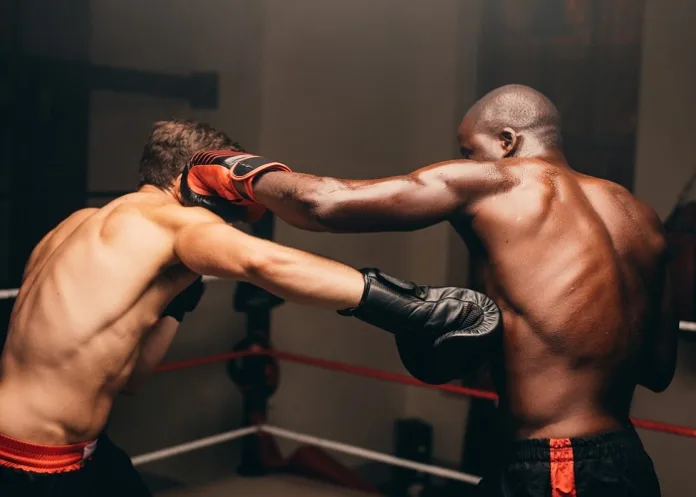Professional athletes who get hit on the head have much more risk of neurological disease in later life, according to the sixth international consensus statement on concussion in sport, published in the British Journal of Sports Medicine.
The document has far-reaching implications because it shapes the way professional and recreational athletes are managed to prevent concussion and how they are treated if they receive a serious head blow, reports BusinessLIVE.
The statement distils the latest scientific research on the short- and long-term effects of head impacts in sport, drawing on 10 systematic reviews and input from more than 100 experts.
In a bid to be more transparent and inclusive, the process adopted anonymous voting, alternative viewpoints, open declarations of potential conflicts of interest, and included the views of athletes, a focus on para-athletes, and ethical perspectives.
Providing new protocols to manage concussion, it took more than five years to develop, and is based on the outcomes of the sixth international conference on concussion in sport held in Amsterdam in October 2022.
The new outlines are clearer and more wide-ranging.
They include new and updated age-appropriate tools for clinicians and sports organisations to help them better identify and manage sports-related concussion in the short – 72 hours to seven days after injury – and longer term, reports Daily Maverick.
Dementia
The systematic review of the long-term effects of repeated head injuries and brain health found an association between being a former professional soccer, ice hockey or American football player, and an increased risk of neurodegenerative diseases like dementia and Alzheimer’s disease. It did not find a similar association among amateur athletes.
“There is still a big gap in our knowledge regarding what happens on the field and why some athletes end up with dementia, but most don’t,” said Wits professor of sport and exercise medicine Jon Patricios, co-chair of the consensus statement.
“The cocktail that leads to those changes is still not clear, and lots of questions still need to be answered.”
In a departure from previous advice to rest for the first 24 to 48 hours after a concussion, the new guidelines recommend getting up and about.
“We advise resuming daily activities from the first 24 hours, using light exercise as a rehabilitation tool,” Patricios said.
An earlier return to exercise had been shown to reduce the time – to returning to play or returning to school – by an average of five days, and athletes should be encouraged to systematically increase the intensity of their training, guided by the extent to which it worsens their symptoms, he said.
More research was needed to determine how many concussions were too many, and how this might be incorporated into decisions about retiring athletes, Patricios added.
Case in point
This week, it was revealed former All Black prop Carl Hayman was fighting against early onset dementia and chronic traumatic encephalopathy (CTE), a documentary showing that Hayman, once the most feared prop in world rugby and the highest-paid player on the planet, has been reduced to a shell of his former self.
Repeated trauma to the head damages the brain in ways that scientists are only starting to fully comprehend, reports Daily Maverick.
The new guidelines feature evidence-based strategies for returning to active sport and education after concussion; early exercise and treatment recommendations; approaches to prevention; targeted rehabilitation; potential long-term health effects; and a call for a working group to be set up to guide further research on the potential long-term effects of concussion on health.
Recommendations include:
Prevention
• Policy or rule changes to minimise collisions, such as disallowing body checking in ice hockey – a defensive move in which the player tries to separate the puck from his/her opponent
• Neuromuscular training – aerobic, balance, strength, agility exercises – in warm-ups
• Mouthguard use in ice hockey (all ages)
• Implementing laws and protocols, such as mandatory removal from play after actual or suspected concussion; healthcare professional clearance to return to play; and education of coaches, parents, and athletes on the signs and symptoms of concussion.
Early interventions
• Strict rest isn’t recommended, stronger evidence showing that light-intensity physical activity, routine activities of daily living, and aerobic exercise, like walking and stationary cycling, can aid recovery, as can limiting screen time during the first 48 hours.
Rehabilitation
• For those experiencing dizziness, neck pain and/or headaches for more than 10 days, the Statement recommends cervico-vestibular rehabilitation — physiotherapy exercises to improve strength and flexibility in the neck and balance.
Persisting symptoms
• Multidisciplinary team assessment to identify types, pattern, and severity of symptoms and any other contributory factors is advised for those with symptoms lasting more than four weeks.
Recovery
• Advanced neuroimaging, biomarkers (chemical signals from nerves or blood vessels), genetic tests, and other emerging technologies to assess recovery are useful for research into the diagnosis, outlook, and recovery from sports-related concussion, says the statement. But as yet, they are some way off from being used in clinical practice.
Potential long-term effects
The statement notes the “increasing societal concern about possible problems with later in life brain health in former athletes, such as mental health problems, cognitive impairment and neurological diseases”.
But the studies to date on the links between early sports participation and later-life cognitive impairment and dementia are limited because they haven’t been able to adjust for a range of potentially highly influential factors, it says.
However, it’s reasonable to consider that repeated head impact may be tied with chronic traumatic encephalopathy neuropathologic change (CTE-NC), a neurological disease uniquely associated with a previous history of repetitive head impact, it says.
BJSM Concussion report (Open access)
See more from MedicalBrief archives:
New UK concussion guidelines make players ‘sit it out’
More players join lawsuit for concussion-related disorders
Sports industry may have helped downplay dangers of concussions and head injuries
Even one, moderate concussion can lead to cognitive deterioration – large study

